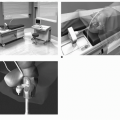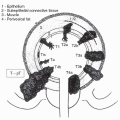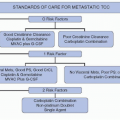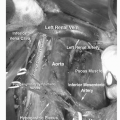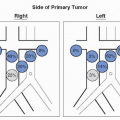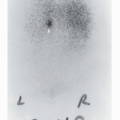References
1. American Cancer Society. Cancer facts and figures 2009 Atlanta: American Cancer Society;2009.
2. Stephenson AJ, Bosl GJ, Motzer RJ, et al. Retroperitoneal lymph node dissection for nonseminomatous germ cell testicular cancer: impact of patient selection factors on outcome. J Clin Oncol 2005;23:2781-2788.
3. Carver BS, Serio AM, Bajorin D, et al. Improved clinical outcome in recent years for men with metastatic nonseminomatous germ cell tumors. J Clin Oncol 2007;25:5603-5608.
4. Moul J, Paulson D, Dodge R, et al. Delay in diagnosis and survival in testicular cancer: impact of effective therapy and changes during 18 years. J Urol 1990;143:520-523.
5. Bosl G, Goldman A, Lange P, et al. Impact of delay in diagnosis on clinical stage of testicular cancer. Lancet 1981;2:970-973.
6. Stephenson AJ, Russo P, Kaplinsky R, et al. Impact of unnecessary exploratory laparotomy on the treatment of patients with metastatic germ cell tumor. J Urol 2004;171:1474-1477.
7. Moul J, Moellman J. Unnecessary mastectomy for gynecomastia in a testicular cancer patient. Mil Med 1992;157:433-434.
8. Fleming I, ed. AJCC cancer staging handbook. Philidelphia: Lippincott-Raven, 1998.
9. Dash A, Carver BS, Stasi J, et al. The indication for postchemotherapy lymph node dissection in clinical stage IS nonseminomatous germ cell tumor. Cancer 2008;112:800-805.
10. IGCCCG. International Germ Cell Consensus Classification: a prognostic factor-based staging system for metastatic germ cell cancers. J Clin Oncol 1997;15:594-603.
11. Jamieson J, Dobsin J. Lymphatics of the testicle. Lancet 1910;1:493-495.
12. Skinner D, Leadbetter W. The surgical management of testis tumors. J Urol 1971;106: 84-93.
13. Donohue J, Zachary J, Maynard B. Distribution of nodal metastases in nonseminomatous testis cancer. J Urol 1982;128:315-320.
14. Weiscbach L, Boedefeld E. Localization of solitary and multiple metastases in stage II nonseminomatous testis tumor as a basis for a modified staging lymph node dissection in stage I. J Urol 1987;138:77-82.
15. Sogani P. Evolution of the management of stage I nonseminomatous germ cell tumors of the testis. Urol Clin North Am 1991;18:561-573.
16. Leibovitch I, Foster R, Kopecky K, et al. Improved accuracy of computerized tomography based clinical staging in low stage nonseminomatous germ cell cancer using size criteria of retroperitoneal lymph nodes. J Urol 1995;154:1759-1763.
17. Hilton S, Herr H, Teitcher J, et al. CT detection of retroperitoneal lymph node metastases in patients with clinical stage I testicular nonseminomatous germ cell cancer: assessment of size and distribution criteria. Am J Roentgenol 1997;169:521-525.
18. Sohaib SA, Koh DM, Barbachano Y, et al. Prospective assessment of MRI for imaging retroperitoneal metastases from testicular germ cell tumours. Clin Radiol 2009;64:362-367.
19. De Santis M, Becherer A, Bokemeyer C, et al. 2-18fluro-deoxy-D-glucose positron emission tomography is a reliable predictor for viable tumor in postchemotherapy seminoma: an update of the prospective multicentric SEMPET trial. J Clin Oncol 2004;22: 1034-1039.
20. Albers P, Bender H, Yilmaz H, et al. Positron emission tomography in the clinical staging of patients with Stage I and II testicular germ cell tumors. Urology 1999;53:808-811.
21. de Wit M, Brenner W, Hartmann M, et al. [18F]-FDG-PET in clinical stage I/II nonseminomatous germ cell tumours: results of the German multicentre trial. Ann Oncol 2008;19:1619-1623.
22. Tiffany P, Morse MJ, Bosl G, et al. Sequential excision of residual thoracic and retroperitoneal masses after chemotherapy for stage III germ cell tumors. Cancer 1986;57: 978-983.
23. Gels ME, Hoekstra HJ, Sleijfer DT, et al. Thoracotomy for postchemotherapy resection of pulmonary residual tumor mass in patients with nonseminomatous testicular germ cell tumors: aggressive surgical resection is justified. Chest 1997;112:967-973.




